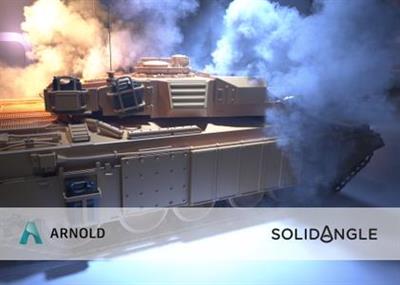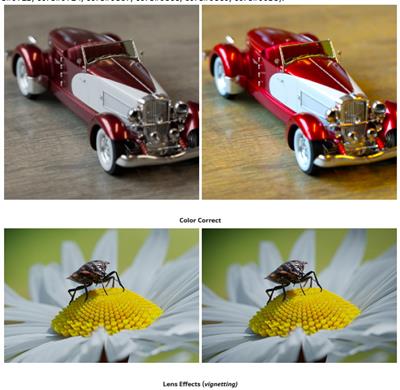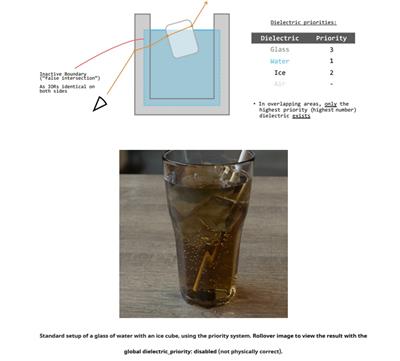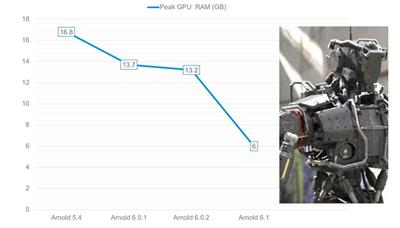
Solid Angle Katana 3.2-3.6 to Arnold 3.1.0 | 810.3 mb
The Arnoldrenderer product team is pleased to announce the availability of Arnold (or KtoA) 3.1.0 for Katana. This release introduces Arnold 6.1.0.0 and is a feature release bringing USD plugins for the Hydra viewport, Arnold material transfer via an included build of KatanaUsdPlugins, a brand new post-processing framework (imagers), support for nested dielectrics, much improved progressive and adaptive sampling, on-demand texture loading on GPU, and a variety of enhancements and fixes.
KtoA 3.1.0.0 - Release Date: 28 Oct 2020
Enhancements
Imagers: We're introducing a brand new framework to apply post-processing effects such as color correction, vignetting, or tone mapping. A new type of post-processing nodes called imagers operate on pixels before the output driver. Imagers can be chained. The initial set of imagers consists of:
. imager_exposure
. imager_color_correct
. imager_lens_effects
. imager_white_balance
. imager_tonemap
Imagers work both in batch and interactive contexts. While imager parameters can change interactively during rendering, adding a new imager currently requires the render to be restarted, so it's a good idea to add the ones you will need to adjust at the beginning of an interactive session. We are looking at removing this limitation in a subsequent release. (core#8368, core#9716, core#9723, core#9724, core#9867, core#9868, core#9869, core#9938).

Nested dielectrics: Physically-correct reflection and refraction of rays in scenes with adjacent dielectrics, such as liquids in glass vessels, has been implemented by resolving overlapping, i.e. "nested", dielectrics via a priority system. This allows for more realistic renders of scenes such as glass containers with liquid contents and bubbles, correctly accounting for the change in the index of refraction as rays refract through the transparent media. The new dielectric_priority parameter on the standard_surface shader assigns a priority to the internal dielectric medium of the closed transparent object the shader is assigned to. These priorities specify that in an area of overlap of two transparent objects, only the highest priority dielectric medium exists (see the schematic glass of water below). The priority is simply a signed integer (default 0), which can be increased or decreased as needed to define the dielectric medium in the overlap areas. If priorities are made equal, then media are effectively blended in the overlap. The effect can be disabled globally with options.dielectric_priorities (Nested Dielectrics in the Advanced tab of the render settings) in case you need to revert to the legacy mode, which does not correctly compute the refractions. (core#6023)

Improved progressive and adaptive sampling: Better sampling now results in much faster noise convergence, especially with adaptive sampling enabled. (core#9941)

Improved performance on Windows: Arnold now runs on average 7-8% faster overall on Windows. (core#5481, core#9876, core#9975)
Improved IPR interactivity: IPR interactivity on both CPU and GPU, especially when moving the camera in a scene with many nodes (thousands to millions of meshes, ginstances, lights, shaders, etc.), is improved. For instance, a scene with 24,433 ginstances and simple shading went from 8 fps to 14 fps on the CPU and about 3 fps to 20 fps on the GPU. (core#8662, core#9918, core#10027, core#10029)
Improved performance in Toon on Windows: The contour_filter used for toon rendering should now be faster and scale better especially on Windows, with up to 3x speedups on AMD Threadripper 2 and up to 4x speedups on AMD Threadripper 3 CPUs. (core#7844)
Toon AOV prefix : The toon shader has a new optional aov_prefix that will be prepended to the toon AOVs' names. For instance, if aov_prefix is "toon_", the toon diffuse AOV will be written out to "toon_diffuse". This can be used when you need to access both the toon AOVs and the core's LPE AOVs. (core#9823)
Improved soft creases in adaptive subdivision: Normals for soft creases follow the geometry closer for low iterations. (core#9971)
GPU Enhancements
Improved on-demand loading of textures: The GPU renderer can now partially load textures which results in important GPU memory savings when using tiled and mipmapped textures, such as from .tx textures. In a typical scene, the amount of memory needed for textures could be reduced to be up to 5x smaller. A recent driver is needed for this feature (core#9984).

Initial support for light linking: Initial support has been added for light linking. Currently, there is a limitation that light linking is not supported on volumes. (core#9890)
Support light AOV groups: Adding light AOV groups in LPEs is now supported on the GPU. (core#9882)
Improved OSL JIT compilation performance: OSL JIT compilation performance has been improved, meaning faster time to first pixel and improved interactivity when using OSL shaders. The improvement averaged 6.3x faster during testing. (core#10004)
Improved support for min pixel width and thin-walled sampling: We have improved compatibility with the CPU renderer for min pixel width on the GPU and thin-walled sampling on zero roughness surfaces. (core#9291)
Partial GPU IPR output: Like on the CPU, when the FPS goes below a certain threshold (5fps by default), instead of not displaying anything, the GPU will at least display the pixels that have finished rendering. Since GPU currently renders pixels in a top to bottom ordering, this will result in the top part of the image being updated while the lower part becomes stale. (core#10027)
OptiX cache location change: The Optix cache directory used to be of the form: arnold-_driver-. Now it is simply arnold. This means the same cache will be used across driver and Arnold versions. Upgrading to a new version will still likely cause a lengthy JIT/cache pre-population, but it will reduce disk usage as old versions will not stay around-consuming disk space. (core#9239).
USD enhancements
Light Shaping: The procedural now supports the UsdLuxShapingAPI, allowing the use of spot and IES lights (usd#344).
UsdTransform2d: The render delegate now supports the UsdTransform2d preview shader (usd#516).
Per-face material assignments: The render delegate now supports per-face material assignments (usd#29).
Render Stats: The Render Delegate now returns render stats via GetRenderStats. For now, this is used to show render progress in Solaris (usd#537).
Schema for custom procedurals: The schemas now include ArnoldCustomProcedural for describing custom procedurals (usd#487).
Schema updates: Schemas now support cameras, render settings, and new output types (usd#500).
Parent Scope: There is a new flag to specify a custom root for all exported prims (usd#292).
ST for Texture Coordinates: Texture coordinates are now written as primvars:st to match the USD convention (usd#542).
Incompatible changes
Correct refractions with nested dielectrics: Refraction through adjacent transparent media now looks more physically correct thanks to nested dielectrics resulting in a look change. If you need to revert to the legacy unphysical behavior for compatibility reasons, you can disable nested dielectrics globally by setting options.dielectric_priorities to False.
mix_shader add for transparency: Previously, the add mode of the mix_shader also added the transparency closures, which means that effects such as min pixel width would be double-counted, leading to objects disappearing. Now, we will add only non-transparency closures, while we pass through the max of the transparency closures. The old behavior can still be obtained by setting add_transparency to true (core#9952).
Skipped node updates: In order to improve IPR interactivity, we skip the per-frame node update if we believe that node has not changed. If our internal heuristics for detecting node changes is wrong and node_update was supposed to be called, you can set the force_update metadata on your node:
node_parameters
{
AiMetaDataSetBool(nentry, nullptr, "force_update", true); // depends on camera node
// ...
}
so that Arnold will always run node_update on every render pass. At the moment, this should only be needed for nodes that access options.camera in their node_update. If you do not have access to your shader's source code, you can globally disable this optimization by setting the options.enable_fast_ipr to false (core#8662).
Katana's highly efficient, collaborative approach to lighting and look development gives you the creative scope and scalability to meet the needs of today's most demanding CG-rendering projects. Equally suited to both short and long-form animation and VFX projects, Katana's unique design lets you work with massive scenes and high volumes of shots; easily reuse looks; and make revisions without repeating scene setup work, so you can spend more time achieving higher quality results.
Solid Angle SL is the technology company behind the Arnold rendering software, with offices in Madrid and London and customers throughout the world including Framestore, DreamWorks, ILM, Sony Pictures Imageworks, MPC, The Mill, Mikros Image and Rising Sun Pictures. Arnold was designed from the ground up to efficiently raytrace the complex geometric datasets required for feature-length CGI animation and big budget visual effects, while at the same time simplifying the pipeline, reducing the number of passes, minimizing storage requirements and greatly enhancing interactivity for lighting artists.
Product: Solid Angle Katana to Arnold
Version: 3.1.0
Supported Architectures: x64
Website Home Page :
http://www.arnoldrenderer.com]www.arnoldrenderer.com
Language: english
System Requirements: PC *
Size: 810.3 mb
Compatible Katana Versions
- Katana 3.2v1+
- Katana 3.5v1+
- Katana 3.6v1+
System Requirements
- Windows 7 or later, with the Visual Studio 2015 redistributable
- CPUs need to support the SSE4.1 instruction set
- Optix denoiser requires an NVidia GPU with CUDA Compute Capability 5.0 and above
- Arnold GPU works on Linux and Windows and requires an NVIDIA GPU of the Turing, Volta, Pascal, or Maxwell architecture. We recommend using the 450.57 or higher drivers on Linux and 451.77 or higher on Windows.
Download link:
https://rapidgator.net/file/452e9330161cade9bca2616de39d8ad5/1815g.Solid.Angle.Katana.3.2.To.Arnold.v3.1.0.0.rar.html https://rapidgator.net/file/7cd208ac8e579885aa1ab8cec78680db/1815g.Solid.Angle.Katana.3.5.To.Arnold.v3.1.0.0.rar.html https://rapidgator.net/file/5f9b3789fee5df202b891518fb7b300f/1815g.Solid.Angle.Katana.3.6.To.Arnold.v3.1.0.0.rar.html https://nitroflare.com/view/7576C3AB3FE276C/1815g.Solid.Angle.Katana.3.2.To.Arnold.v3.1.0.0.rar https://nitroflare.com/view/EA496D6A1114F48/1815g.Solid.Angle.Katana.3.5.To.Arnold.v3.1.0.0.rar https://nitroflare.com/view/81B67974FE128FB/1815g.Solid.Angle.Katana.3.6.To.Arnold.v3.1.0.0.rar https://uploadgig.com/file/download/4637eC272b089558/1815g.Solid.Angle.Katana.3.2.To.Arnold.v3.1.0.0.rar https://uploadgig.com/file/download/bb6632df1c027480/1815g.Solid.Angle.Katana.3.5.To.Arnold.v3.1.0.0.rar https://uploadgig.com/file/download/dC243Fa52292250c/1815g.Solid.Angle.Katana.3.6.To.Arnold.v3.1.0.0.rar
Links are Interchangeable - No Password - Single Extraction